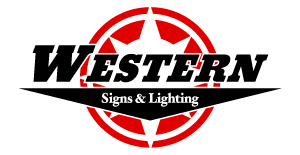In order to improve brand visibility and customer engagement, modern business signage trends for 2024 combine cutting-edge technologies with design aesthetics, emphasizing innovation and sustainability. The following are the main trends:
Interactive and Digital Signage: Touchscreens and augmented reality (AR) are two examples of interactive digital signs that are growing in popularity. These allow companies to offer real-time updates, customized promotions, and immersive experiences. By using mobile devices to display virtual tours or comprehensive product information, AR signage can improve customer interaction.
Sustainability and Eco-Friendly Materials: Recycled materials, LEDs that use less energy, and biodegradable parts are becoming more and more popular. Green signage is an effective way to align with eco-conscious values, as many consumers favor brands that exhibit environmental responsibility.
Minimalist and Bold Design: Businesses can concentrate on bold typography and unique fonts that draw attention without overpowering the viewer by using clean, minimalist signage with lots of negative space.
Personalized and Data-Driven Strategies: AI-powered signage can modify content according to the time, place, and demographics of its audience. This makes the experience more interesting and makes the content that is shown more relevant.
Biophilic and Nature-Inspired Designs: It’s becoming more popular to use organic materials and living components, such as plants, in signage. These designs emphasize a connection to sustainability and produce a soothing aesthetic.
Dynamic Digital Displays: Video walls and high-definition digital screens provide flexible and eye-catching ways to show promotional material. They are perfect for fast-paced industries because of their instantaneous adaptability.
Businesses can maintain relevance, effectively engage audiences, and fortify brand identity by investing in these trends.
Our sign installation services have been created for customers all over the State of Arizona Including Phoenix, Mesa, Chandler, Scottsdale, Gilbert, Tempe & Glendale. Receive a free commercial signage quote anywhere in the Phoenix Valley by giving us a call today at (480) 831-8600.



















